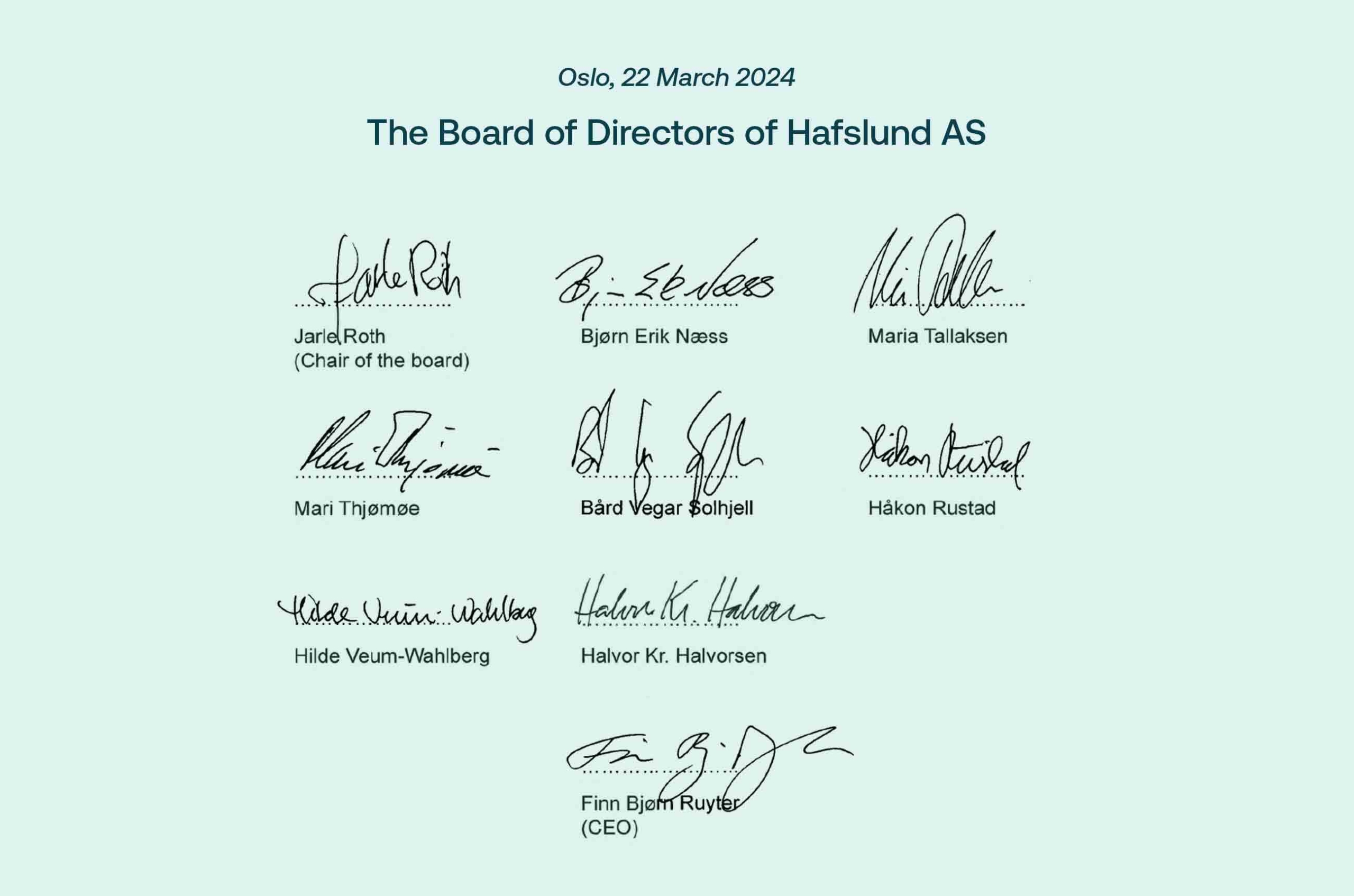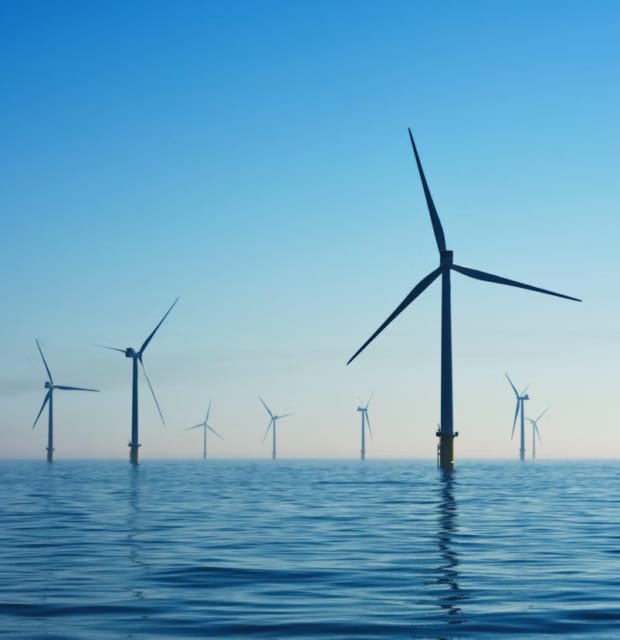Report from the Board of Directors
Hafslund in 2023
2023 was an eventful and demanding year for Hafslund. The Group had record hydropower production of 18.5 TWh and also achieved a record profit after tax of NOK 5,153 billion. Close to 2 TWh in district heating was produced, which is also a production record. A significant contribution to society was made through the production of renewable and circular energy, as well as the payment of record–high taxes and duties to the community and Hafslund’s owner, the City of Oslo.
Hafslund’s vision is “For a world in balance, with renewables”, and the Group consists of three business areas: Hydropower (Hafslund Eco Vannkraft), District Heating and Cooling (Hafslund Oslo Celsio) and Growth and Investments (Hafslund Vekst). Hafslund has a strategy with five focus areas, and the Board will describe the Group’s work within the framework of these five focus areas: “Climate- and nature-positivity”, “Strong growth in renewable energy”, “Balance for the energy system of the future”, “Smart, green urban development” and “The best people are the key”.
Other key events from 2023
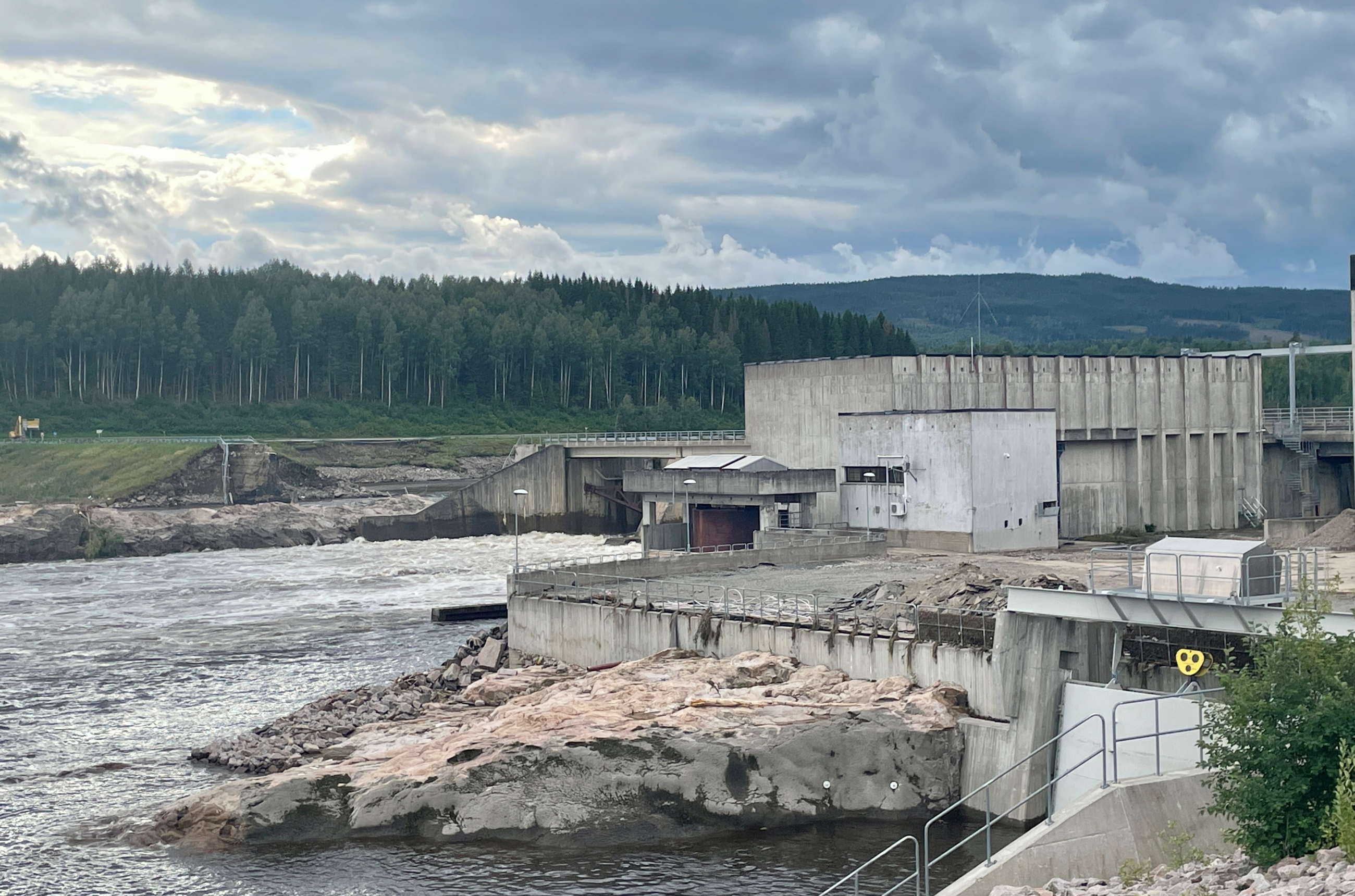
“Hans” and dam failure at Braskereidfoss
2023 was a year characterised by heavy rainfall, and in August the extreme weather event “Hans” caused historically high levels of water to flow into Hafslund’s watercourses. Hydropower employees made an extraordinary effort to prevent flooding and to ensure that the volumes of water were safely managed. However, a very serious incident occurred at the Braskereidfoss facility, and the dam burst due to floodgates not having been opened.
Efforts to determine the reasons for the floodgates not having been opened and the measures that can be taken to reduce the probability of similar incidents from occurring have been of vital importance to Hafslund in the subsequent period. DNV was promptly commissioned to conduct an investigation in order to understand the incident and to use the results to derive learning and make improvements. The investigation concluded that Hafslund Eco Vannkraft had inadequate procedures and systems for managing the type of extraordinary situation caused by the extreme weather event “Hans”. Hafslund has subsequently adjusted emergency preparedness plans and procedures for managing flood risks, and “Hans” was a clear signal that more extreme weather and changing types of weather will also require a different emergency preparedness around the power plants. Measures that were implemented include increased staffing at the operations centre in emergency response situations, adjusted limit for water flow level for staffing the power plant, expanded monitoring function in the event of major floods and improved overview of facilities that are particularly exposed to major floods.
The Board was kept closely and continuously informed after the incident took place and is working together with management on efforts to take all possible steps to prevent similar incidents from occurring in the future.

Carbon capture project in cost-reducing phase
In April 2023, it was announced that Hafslund Oslo Celsio had decided to take the carbon capture project at Klemetsrud into a cost-reducing phase. Updated estimates showed sharp cost increases on equipment deliveries due to inflation, geopolitical instability and the exchange rate, and there was a high probability that the project would exceed the investment framework.
A smaller team with project resources was assembled and tasked with conducting a full review of the budget and possible cost reductions. Since April 2023, the project team has been working on optimising the project and this work has now entered an intensive phase towards an investment decision in the first half of 2024. Hafslund Oslo Celsio has partnered with Aker Carbon Capture and Aker Solutions on a new FEED study. The investment decision will be made by Hafslund Oslo Celsio’s owners, Infranode, HitecVision and Hafslund.
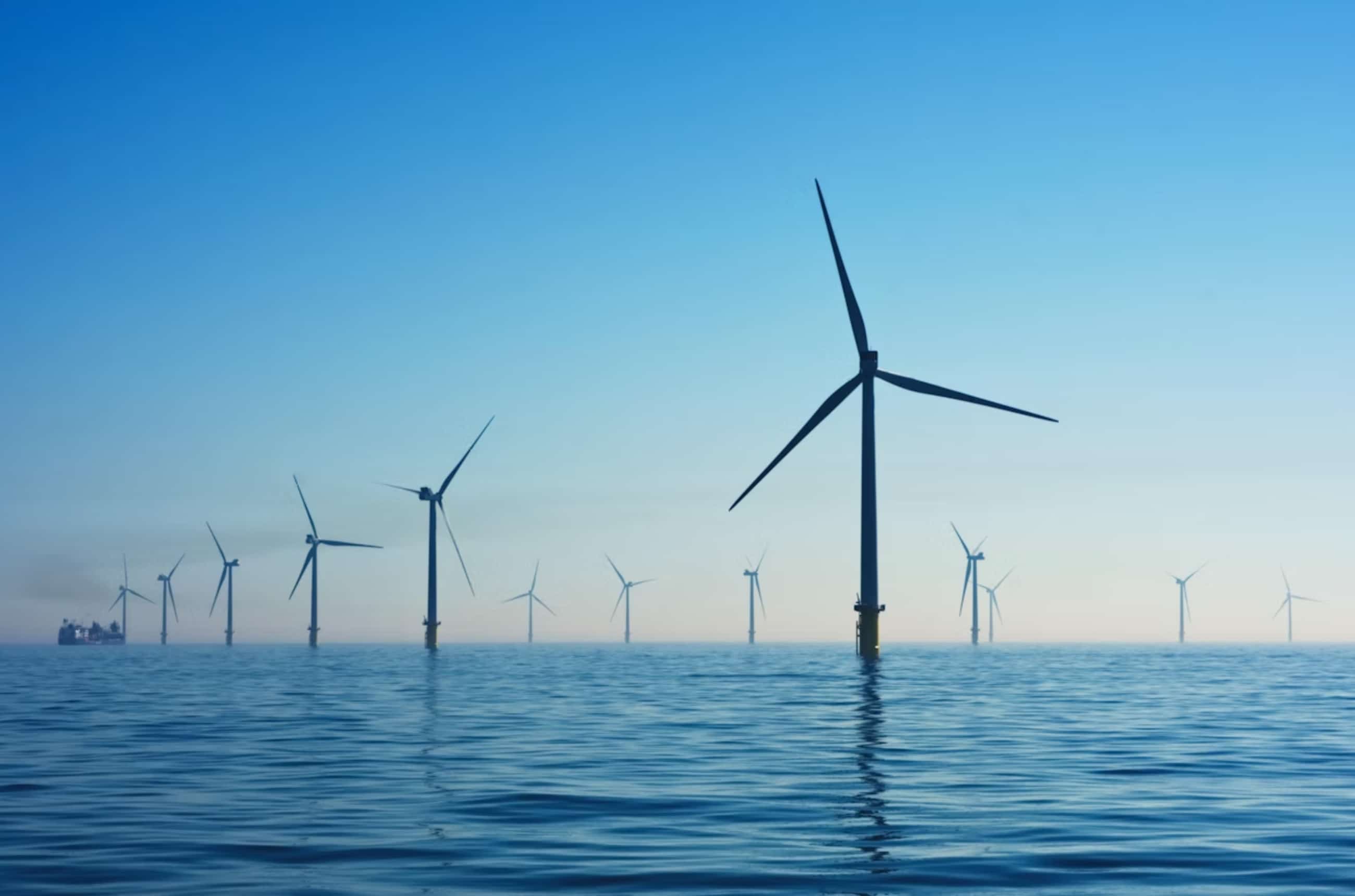
Importance of framework conditions for more renewable energy
Extreme weather and a wetter climate can also be a reminder of the consequences of the energy transition not happening fast enough. The UN climate reports and the most recent UN Climate Change Conference (COP28) in Dubai highlight the urgency of the transition. As a renewables producer, Hafslund has an important responsibility and opportunity to contribute more renewable energy. Political will, licensing processes, taxes and other framework conditions are also crucial for the ability to develop more renewable energy.
Hafslund is focused on looking at the overall picture. With its extensive portfolio, the Group can identify solutions, but also challenges, across the energy system. Hafslund is now making efforts to reach out to politicians and policymakers to contribute knowledge and input. The Group’s positions are further described under ‘Market and framework conditions’. At the beginning of 2024, Hafslund has a particular focus on climate and energy policy having to be viewed in context, licensing processes having to be faster and framework conditions having to be amended to facilitate a profitable district heating industry.
Hafslund's business areas in 2023
Hydropower
Hafslund Eco Vannkraft operates and owns 81 hydropower plants that produce approximately 21 TWh of power. The power plants are located primarily in Vestland, Oslo, Akershus, Buskerud, Østfold and Innlandet, and consist of both reservoir and run-of-river power plants. The production of 18.5 TWh in 2023 was 4 per cent higher than production in a normal year. Hafslund directly owns 56 per cent of the hydropower company and Eidsiva owns 44 per cent.
The development of approximatively 1 TWh in new renewable power production was completed during the period 2018 to 2022. The hydropower business continuously works to upgrade and expand power plants, and the increase in power production from this work is equivalent to 20-40 GWh per year. There is also a continuous search for new and profitable projects. Hafslund Eco Vannkraft currently has more than ten different projects under development. These projects collectively have the potential to contribute 500 GWh of increased energy production and 1,000 MW in increased output.
Hafslund Eco Vannkraft had 459 employees at the end of 2023.
District heating and cooling
Hafslund Oslo Celsio owns and operates plants in the value chain from final treatment of waste to production, sale and distribution of district heating. In addition, Hafslund Oslo Celsio establishes operations within district cooling, and has 100 per cent ownership in the fibre company Hafslund Fiber. In 2023, the company produced 2 TWh of district heating. This is equivalent to heating and hot water for approximately 160,000 households in Oslo.
Hafslund Oslo Celsio operates two waste incineration plants at Klemetsrud and Haraldrud in Oslo, and excess heat from incineration is used to produce district heating. The company also uses excess heat from sewage and data centres for producing heat. Other energy carriers such as bio-oil, wood pellets and electricity are also used during peak-load periods. In August 2022, construction commenced on a full-scale carbon capture and storage (CCS) facility at the Klemetsrud waste incineration plant. Carbon capture will be an important measure for tackling climate change that can both eliminate a significant proportion of Oslo’s annual CO₂ emissions, and the capture of CO₂ from the incineration of biological material will also contribute to removing historical emissions from the system.
Hafslund Oslo Celsio had 239 employees at the end of 2023.
Growth and investments
Hafslund Vekst was established as a separate company in 2022 and consists of the Hafslund Group’s industrial ownership and growth initiatives. Investment activities and follow-up of the Group’s larger ownership interests, including the Group’s important ownership interest in Eidsiva Energi, in addition to the work with new growth within renewable energy, green city development and flexibility, are part of this company. Hafslund Vekst works with both established and new growth initiatives within the renewable value chain and has a clear partnership strategy. Hafslund Vekst collaborates with other companies to secure the complementary expertise and financial strength in order to make new opportunities a reality.
Hafslund is part of the Blåvinge offshore wind partnership and prepares applications for licences for offshore wind development in the North Sea. Within solar power, Hafslund Vekst has ownership interests in both large-scale solar and solar on buildings. Hafslund has also established a partnership with Eidsiva Energi and Akershus Energi for onshore wind power in Eastern Norway.
The ownership in Eidsiva Energi is followed up by Hafslund Vekst, which is the largest owner with a 50 per cent ownership interest. Eidsiva Energi owns 100 per cent of Norway’s largest grid company Elvia, and also has business activities within district heating and broadband. Elvia had around 985,000 customers at the end of 2023 and builds, operates, maintains and renews the power grid in Innlandet, Akershus, Buskerud, Østfold and Oslo. Eidsiva Bioenergi is Norway’s third largest supplier of district heating and supplies about 500 GWh of district heating in Innlandet, and Eidsiva Bredbånd supplies fibre and broadband to around 90,000 customers.
Hafslund Vekst had 54 employees at the end of 2023.
Sustainability
At Hafslund, we work “For a world in balance, with renewables”. The balance in the energy system needs be maintained, and it is more important than ever that this takes place in a sustainable manner. Regulation and standardisation that make it possible to compare and ensure that capital is directed where it has the greatest effect are important, and Hafslund views the increasing focus on sustainability, for example through the introduction of CSRD, as representing an opportunity.
Hafslund’s focus areas and sustainability goals are integrated with the Group strategy. The Group has conducted double-materiality analysis to identify which topics are most important for Hafslund to work on with regard to Hafslund’s impact on people and the environment, ESG risks and opportunities. The topics identified as important to sustainability come under the three main categories of environment, social conditions and governance.
Important topics for Hafslund under the environment category are “Climate change”, “Biodiversity and ecosystems”, and “Resource use and circular economy”. Under social conditions, the important topics for Hafslund are “Health and safety”, “Expertise and culture”, “Human rights”, “Contribution to society and local value creation”. The important topics for Hafslund under governance are “Ethical business operations”, and “Preparedness and cyber security”. “Strategy and sustainability” describes in detail how Hafslund works with strategy and sustainability. This description includes the obligation to report on corporate social responsibility efforts pursuant to Section 3-3c of the Norwegian Accounting Act.

Health, Safety and the Environment (HSE) and employees
Hafslund has an overall goal of zero injuries, for both its own employees and suppliers. Thirteen injuries were registered in 2023, including injuries at suppliers, and eight of these resulted in absence from work. The number of injuries per million working hours (H2) for 2023 was 7.6, compared with 2.9 in 2022.
The Hafslund Group experienced a higher level of injuries in 2023 compared to 2022, although the number of injuries was lower than in 2021. The Group has a strong focus on avoiding injuries and our policy is that nothing is so urgent that it cannot be done safely. Measures are now being taken to reverse the negative development from 2022 to 2023 with more injuries. Understanding of risk and planning have been assigned greater priority in recent years. Hafslund also sets clear HSE requirements for suppliers, which include close follow-up of safety and risk management during the process and subsequent evaluation. HSE is at the top of the agenda at management and operations meetings, and it is an important topic in Hafslund’s leadership development programmes for highlighting responsibility on the line.
More information about the Group’s HSE work can be found in the annual report in the subchapter “Health and safety”.
Sick leave
Hafslund’s goal is that total sick leave shall not exceed 3.5 per cent. Sick leave was 3.2 per cent in 2023, compared to 3.8 per cent in 2022. Targeted measures, and support and training of managers and employees are implemented to contribute to a low level of sick leave.
Employees, equality and diversity
The Group had 812 (compared to 686 in 2022) employees in majority-owned companies at the end of 2023. The increase in the number of employees is the result of professionalisation of Group functions and the need for greater capacity for growth initiatives at Hafslund Vekst. There were also new hires based on the expected high level of retirements in the coming years.
All work at Hafslund must be based on the Group’s values: “Open”, “Responsible” and “Innovative”. The cooperation between management and employee organisations works well and makes valuable contributions to the development of the Group.
Among other things, the core value of “Open” means that value is placed on differences and diversity. Discrimination on the basis of gender, sexual orientation, ethnicity, religion or age must not occur under any circumstances. The Group is working with a long-term focus on diversity, and the Group’s maturity of diversity was measured in 2023. This will enable Hafslund to take active steps and work systematically on diversity in the coming years. The ambition is to develop an organisational culture that recognises differences as a strength. Hafslund strives to be an organisation with a high degree of psychological safety that enables everyone to thrive and realise their potential.
In 2023, 22 per cent of the Group’s employees were women, and this percentage has remained unchanged since 2021. The proportion of female employees is 24 per cent at Hafslund Eco Vannkraft, 18 per cent at Hafslund Oslo Celsio, and 48 per cent at Hafslund Vekst. As at 31 December 2023, the Board of Hafslund AS consists of three women and five men, while Group management consists of four women and three men.
New reporting requirements under the Activity and Reporting Obligation (ARP) will help to promote gender equality and prevent discrimination.
Hafslund’s gender equality report, which has been prepared in accordance with Section 26 of the Norwegian Equality and Anti-Discrimination Act, is available at Diversity and gender equality | Hafslund.
Obligation to report pursuant to the Norwegian Transparency Act
Hafslund published the first report for the Norwegian Transparency Act in 2023. A report for 2024 will be published on www.hafslund.no by the deadline of 30 June 2024. More information about the Group’s work on the Transparency Act can be found here and can also be found in the annual report in the subchapter “Human Rights”.
Market and framework conditions
The power market in 2023
Following the most acute phase of the energy crisis in 2022, the power market normalised somewhat in 2023, with lower prices and better access to energy on the continent and in the Nordic region. However, in historical terms, prices remain at a high level. The energy crisis was primarily caused by the loss of Russian gas, which Europe has dealt with by importing LNG, decreased consumption and more renewable power. In addition, nuclear power in France performed better in 2023 than in 2022. Europe’s gas stores were completely full at the start of the heating season in winter 2023/2024, although the situation remains sensitive to minor changes due to the strained global LNG market.
The hydrological situation in Norway was relatively normal in 2023, with minor discrepancies in the hydrological balance and close to normal inflow levels in the different parts of the country. One exception was the extreme weather event “Hans”, which produced very heavy precipitation, full reservoirs and a high level of forced production from Hafslund’s power plants in Eastern and Western Norway (price areas NO1 and N05) in August. The extreme weather led to an extended period of very low power prices in these areas. Hafslund also had zero prices in the autumn to ensure there was space in the reservoirs for autumn rain and in the event of more extreme weather. During the autumn and towards the end of the year, the hydrological balance normalised and the prices moved closer to those in NO2 and on the continent.
Price hedging
Hafslund has a power price hedging strategy which has the objective of stabilising income and cash flow, and exploiting market opportunities. The Group conducts ongoing analyses to hedge the sale of power, primarily within the Nordic power market. In order to reduce risk, the Group hedges production revenues through financial power contracts for the physical supply of power to the corporate market and through long-term agreements with industrial companies. The hedged share of production is regulated by frameworks and guidelines for risk management and power hedging and will vary in accordance with the expectations for production volume and the assessment of risk and market opportunities.
The high-price contribution, an additional tax on market prices exceeding 70 øre/kwh which was introduced in the autumn of 2022, was discontinued with effect from 1 October 2023. Up until that date, the high-price contribution had meant that when prices were rising, hydropower companies had a marginal tax rate of up to 90 per cent on the physical spot delivery, while profits from financial hedging contracts were taxed at 22 per cent. This asymmetry limited the ability to manage price risk with financial contracts, and made hydropower companies more dependent on contractual forms included in the basis for resource rent tax. This applies to contracts over seven years with power-intensive industries and fixed-price contracts for other industries with durations of three, five or seven years. Physical contracts to the business sector are an important focus area for Hafslund. However, there is limited demand for long-term industrial contracts and the market for physical contracts to the business sector has declined. However, during 2023, the Group was still an active provider of physical contracts and sold fixed-price agreements to a number of companies, both directly and through the companies’ electricity suppliers.
The financial market is important for Hafslund’s hedging activities. The power exchange for the Nasdaq Nordic financial market fell sharply in 2022, but developed in a positive direction during the autumn of 2023, despite liquidity still being very low in comparison with historical levels.

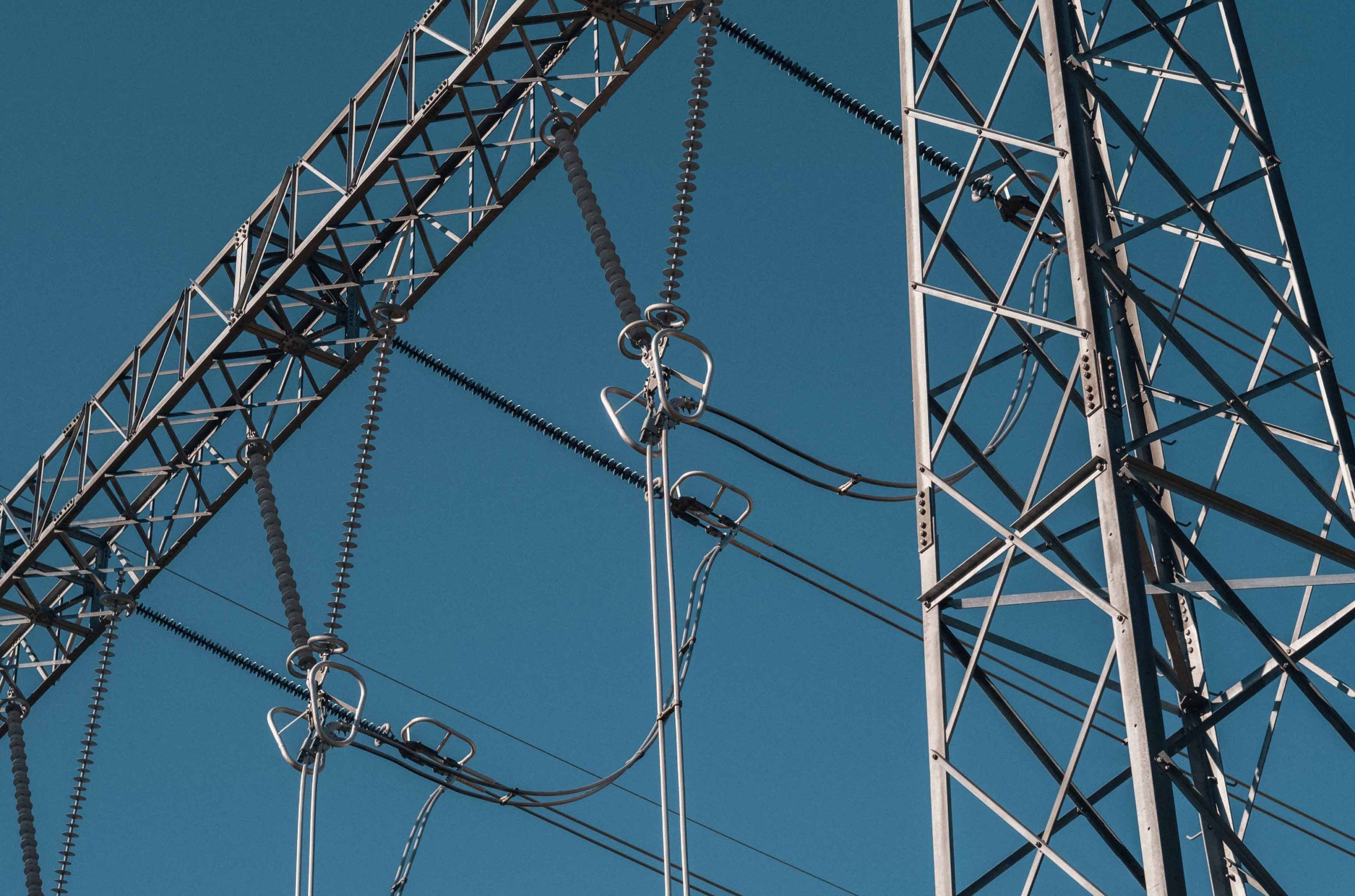
Work with framework conditions
In recent years, renewable energy production has been high on the political agenda, both as a result of extraordinarily high price levels and the increasing pressure to succeed with the energy transition and to achieve climate targets that have been adopted. The scarcity of renewable applies to difficult situations that involve everything from national and regional security, impact on climate and the environment, and society’s overall economy.
Norway has an efficient power system with a relatively high degree of flexibility and good access to new renewable resources. However, analyses carried out by Statnett in 2023 show that Norway may have a power deficit as early as the second half of the 2020s due to the fact that the increase in consumption is exceeding new production. The framework conditions and the licensing system for new developments are of vital importance if Norway is to succeed in increasing production of renewable energy and facilitating the emergence of new green industry in the country. The development of new capacity within increased renewable energy and power infrastructure is not going fast enough and licensing processes and framework conditions can better facilitate energy transition than is the case today. In 2023, Hafslund worked on framework conditions within the following topics:
Facilitating the development of hydropower and valuable regulation capacity
From 2018 to 2022, Hafslund participated in the development of a total of 1 TWh of new hydropower. The potential for larger hydropower projects is limited under the current framework conditions, and the increased resource rent tax that was introduced in 2022 also raises the tax burden when power prices are low and will impact the rate of investment in new hydropower. Hafslund understands that the Norwegian State wants to impose more tax on the power industry during times of high profits, although the manner in which the new taxes have been arranged is decisive to the ability of the power industry to finance new renewable power development and types of projects that will be profitable. It was important that the extra tax on power prices above 70 øre/kWh was discontinued with effect from 1 October 2023, because this tax had a particularly inhibiting effect on optimal energy allocation, price hedging and investments in capacity. The need for output capacity and regulatory capacity will increase in the coming years because a larger proportion of the energy will come from non-adjustable sources such as solar and wind. Facilitating investments in hydropower and output today may be crucial for there being a good and well-functioning power system in the future.
Facilitating large-scale industrial development of the offshore wind industry
Norway has enormous offshore wind resources, and the government’s ambitions for the awarding of offshore wind licences by 2040 are important. Clear ambitions and underlying framework conditions are crucial for large-scale, industrial development and profitable utilisation of offshore wind resources. Hafslund wants to contribute to developing Norwegian offshore wind and has the goal of becoming a significant operator in this sector. Hafslund is a member of the Blåvinge offshore wind partnership, which prepares applications for licences for offshore wind development in the North Sea. The company is working intensively on submitting a competitive bid for Utsira Nord and is focused on this as well as future tenders. In 2023, Blåvinge decided not to apply for pre-qualification for Sørlige Nordsjø II due to increased costs and the fact that the stipulated financial framework conditions meant that the project was not sufficiently profitable. The partnership has contributed input in consultation processes regarding how the awarding of licences for the first fields in the North Sea can be organised in a sound manner that contributes to the long-term and sustainable development of Norway’s offshore wind industry.
Facilitating further development of hydronic heating and cooling in Oslo
District heating and cooling can to a large degree cover heating and cooling needs in cities and towns and relieve the power system and power grid. Of particular importance are thermal energy systems that can exploit the large volume of excess heat generated in society from waste incineration and sewage, and not least, from new industries such as data centres and hydrogen production.
A total of 2 TWh in district heating is produced in Oslo, which is equivalent to 28 per cent of the heating needs of the city, and there is potential for developing significantly more capacity. New investments in district heating will require a change in key framework conditions and regulations for district heating that have had weaker profitability in recent years. The district heating tariff is regulated to follow the electricity price, and the price for consumers will always be less than the price of electricity. The price of electricity for consumers has been regulated by the electricity support scheme in recent years. The companies that sell electricity to consumers have received electricity support payments from the Norwegian State to ensure the companies’ profitability when revenues were limited by the level of electricity support. The district heating industry has not received equivalent support, and this has resulted in a significant loss of revenue for the district heating industry that has had to finance electricity support to consumers at its own expense. In addition, the increase in the waste incineration tax of over 85 per cent in the 2024 national budget has had a dramatic impact on district heating generated from waste incineration. The increase in the waste incineration tax places considerable pressure on the profitability of district heating production. There need to be framework conditions in Norway, and especially in the larger cities, that provide strong incentives for more district heating and for heat production to be combined with profitable carbon capture and storage.
In 2022, the Norwegian Water Resources and Energy Directorate (NVE) initiated work to assess new price controls for district heating. It is important that the price controls for district heating effectively safeguard customer needs while also providing incentives for both efficient operations and necessary investments in district heating to relieve pressure on the rest of the energy system.
Another decisive framework condition for stimulating increased use of district heating is that the energy labelling scheme must be changed so that it equates environmental grades for supplied energy (electricity and district heating) with so-called internal building solutions, such as heat pumps and solar energy. There is also a need for amendments to building regulations that should set stricter requirements for the use of hydronic heating in buildings. This will facilitate flexible heating solutions over time.
Converting buildings with electrical heating to hydronic heating will involve costs will require investments to be made. However, the conversion will provide significant relief to the power grid, which is particularly urgent in electricity price area NO1, where it has been announced that the power grid will be at full capacity until 2030-2035. Conversion support from Enova may be crucial in order to relieve the grid and free up high-value energy for consumption other than heating, such as the electrification of fossil-based industry.
Facilitating more stable and predictable electricity agreements for end users
Ensure balanced assessment of environmental considerations
Hafslund is committed to ensuring that encroachment on nature takes place with the least possible impact. Hydropower is subject to licence conditions which stipulate requirements for water flows in rivers and water levels in reservoirs. The revision of these conditions is a process regulated by the government authorities with the objective of assessing whether the conditions should be adjusted. When such adjustments are necessary, Hafslund proposes knowledge-based environmental improvements that have the least possible negative impact on power production.
Increased electrification and reindustrialisation of society
Income statement, cash flow, balance sheet and equity
Unless otherwise stated, figures for 2022 are in brackets.
Results and result drivers in 2023
Hafslund’s profit after tax in 2023 was NOK 5,153 million (NOK 4,344 million), an increase of NOK 809 million from 2022. High production, high power prices and stable operations contributed to a good result. In 2023, the operating profit was NOK 13,862 million, compared with NOK 19,340 million in 2022. The decrease in operating profit was primarily due to lower power prices in comparison with the extreme situation that characterised 2022.
For Hafslund, the power price is crucial for performance development. The average power price for NO1 was approximately one-third of the corresponding price in 2022, despite power prices still being high from a historical perspective. Future power prices have also fallen. However, this had a positive effect on results in the form of changes in the value of financial power hedging. The achieved power price of 73 øre per kWh was down 77 øre per kWh from the previous year. In addition to sales in the spot market, the power price achieved is influenced by the sale of power to industry and the business sector at fixed prices, realised results from financial power hedging, and the sale of concessionary power at prices determined by the government.
Lower power prices significantly reduced operating profits in 2023 compared to 2022, despite good power production: 18.5 TWh in 2023 versus 13.8 TWh in 2022. Hydropower production in 2023 was a full 34 per cent higher than in 2022, and 5 per cent higher than normal production. The hydrological situation in Norway was relatively normal in 2023, with the exception of the extreme weather event “Hans”, which produced very heavy precipitation, full reservoirs and a high level of forced production from Hafslund’s power plants in the late summer. However, the prices during this period were very low, and the high production is therefore only reflected in the results to a minor extent.
Operating expenses of NOK 5,432 million were an increase from NOK 3,404 million in 2022. The increase was primarily due to the year-round effect of Hafslund Oslo Celsio, which for 2022 only impacted the result from the acquisition in May. An increase in the number of employees and general inflation also contributed to cost increases from 2022 to 2023.
Results from affiliates and joint ventures amounted to NOK 595 million (NOK 716 million) in 2023. The profit from ownership in Eidsiva Energi was NOK 692 million (NOK 520 million). The increase in the profit contribution from Eidsiva Energi was largely the result of reduced tariffs from Statnett in addition to reduced grid losses due to lower power prices.
Net financial expenses amounted to NOK -230 million (NOK -462 million). The change in relation to the previous year was due to interest rate and exchange rate developments. Higher interest rates and bank deposits during the year increased interest income, which, together with foreign exchange gains, more than offset increased interest costs on the Group’s external financing.
The tax expense of NOK 8,478 million (NOK 14,535 million) corresponds to an effective tax rate of 65 per cent (80 per cent) of the pre-tax profit, adjusted for the results from associates and joint ventures. The high tax rate must be viewed in the context of the special taxation of the hydropower business, which involved resource rent tax of 45 per cent per cent and high-price contribution of 23 per cent for power prices above 70 øre per kWh up to 1 October 2023, in addition to the general tax rate of 22 per cent. The result from financial power hedging is not subject to resource rent tax and contributed to a lower effective tax rate in 2023 in comparison with 2022.
The underlying profit after tax for the year (profit after tax, excluding changes in value and other non-recurring items) was NOK 4,085 million (NOK 4,817 million). The return on equity was 11 per cent (10.2 per cent) in 2023.
Cash flow
Hafslund had a net cash flow from operations of NOK 2,536 million (NOK 11,773 million) in 2023, following payment of tax in arrears for 2022 of NOK 13,838 million (NOK 4,701 million). Cash flows from operations before tax in 2023 of NOK 16,373 million were at the same level as in 2022 (NOK 16,474 million). Tax for 2023 of NOK 7,365 million will be paid in 2024.
Net cash flow from investment activities was NOK 368 million in 2023 (NOK – 2,447 million). 2023 was a year with no major transactions, but high dividends from associated companies, including Eidsiva Energi, of NOK 1,196 million (NOK 450 million). Net cash flow from financing activities was NOK -6,085 million (NOK -2,729 million). Dividends paid to the City of Oslo and minority owners amounted to NOK 3,072 million (NOK 3,033 million). During the period, the Group increased external interest-bearing debt by NOK 2,073 million (NOK 3,380 million), and paid off interest-bearing debt by NOK 4,736 million (NOK 2,553 million), of which NOK 1,917 million was a subordinated loan from Eidsiva Energi to the company Hafslund Eco Vannkraft Innlandet AS.
Balance sheet, financing and equity
As of the end of 2023, Hafslund had total assets of NOK 91 billion (NOK 97 billion) and capital employed of NOK 64 billion (NOK 66 billion). The Group’s net interest-bearing debt including subordinated loans was NOK 9.6 billion (NOK 9.5 billion). Gross interest-bearing debt was NOK 2.6 billion lower in 2023 compared to 2022, while bank deposits and other interest-bearing receivables were NOK 2.7 billion lower. The average coupon rate for the loan portfolio, excluding subordinated loans, was 4,8 per cent and the average time to maturity is 5 years. Outstanding subordinated loans amounted to NOK 5.4 billion (NOK 7.3 billion) at the end of 2023.
Hafslund has a robust financing structure with long-term, committed credit facilities and liquidity to cover a minimum of twelve months’ loan maturity. At year-end 2023, the Group had unused credit facilities of NOK 3.5 billion (including overdraft facility of NOK 1 billion). Of the Group’s overdraft facility of EUR 50 million to cover daily market settlement on Nasdaq OMX, EUR 47 million had not been used at the end of 2023. The Group has loan agreements that do not impose requirements for financial key figures (covenants). During 2023, the Group issued two new green bonds, each of which amounted to NOK 500 million, with respective maturities of 5 and 6 years.
In 2023, Scope Ratings increased Hafslund’s rating from BBB+ with a positive outlook to A- with a positive outlook. This increase is a reflection of the Group’s strong financial position.
Result Hydropower
In 2023, the business areas Hafslund Eco Vannkraft had operating revenues of NOK 15,599 million (NOK 20,534 million). The operating profit (EBIT) of NOK 13,317 million (NOK 18,743 million) was a decrease of NOK 5,426 million from the previous year. The decrease in operating revenues and operating profit was primarily due to lower power prices in Southern Norway, despite high production and increased earnings from hedging activity.
The power price achieved was halved from 2022 to 2023, and this alone contributed NOK 10 771 million to the reduced operating profit. In 2023, the power price achieved was 1 per cent lower than the average spot prices in the hydropower business’ production areas. Revenues from the sale of guarantees of origin were NOK 794 million (NOK 215 million). The operating profit includes a value adjustment for power and currency derivates of NOK 1,224 million (NOK -431 million), and a value adjustment of liabilities related to compensation/free power of NOK 95 million (NOK -8 million). The effects mainly relate to financial instruments that are measured at fair value with changes in value through profit or loss. When adjusted for this, underlying operating profit was NOK 11,998 million, a decrease of NOK 7,184 million from the previous year.
Power production of 18.5 TWh in 2023 was 4.7 TWh higher than in 2022 and 0.8 TWh higher than normal production. In isolation, higher power production contributed NOK 3,469 million in increased operating profit compared to 2022. The incident at Braskereidfoss in August caused by the extreme weather event “Hans” resulted in the power plant being temporarily out of service due to dam failure and water penetration into the two power stations. Preliminary assessments are that the power plant may be back online during 2026 at the earliest. Braskereidfoss has an annual normal production of 170 GWh, which is just under 1 per cent of the hydropower business’ annual normal production. Other than the incident at Braskereidfoss, there were good operations and resource allocation, as well as a high level of availability at the power plants during the year.
Operating expenses, including depreciation, were NOK 2,292 million in 2023, an increase of 20 per cent from 2022. There was an increase of 15 per cent in less influenceable costs such as transmission costs, property taxes and compensation, as well as write-downs related to the Braskereidfoss power plant that contributed to this; however, more employees and general price inflation also contributed to the increase. In connection with the dam failure and water penetration at the Braskereidfoss power plant, NOK 130 million was recognised as write-downs in the balance sheet, as well as NOK 20 million in clean-up/remediation costs.
Result District heating and cooling
2023 was a particularly demanding year for the district heating business. Production was at a high level of 1.8 TWh, but the profit after tax ended at NOK -62 million in 2023. Framework conditions, price increases on fuels and extraordinary costs negatively impacted the result.
The business area had total operating revenues of NOK 3,072 million. This primarily related to revenues from district heating. Despite high sales volumes (11 per cent higher compared to 2022), revenues from underlying operations* were not correspondingly high. The district heating price is tied to the electricity price, which was significantly lower in 2023 than in 2022. The district heating prices are also limited by the electricity support scheme, but unlike electricity companies, the district heating operators have not received compensation from the Norwegian State for the lost income this has caused. During the winter months, the price of the input factors is significantly higher than the revenue cap set through the electricity support scheme, and this alone reduced revenues by NOK 227 million in 2023.
Operating costs in 2023 ended at NOK 2,287 million and were impacted by high fuel prices in 2023. At the same time, fixed costs were higher than normal as a result of restructuring and new IT infrastructure, increased maintenance costs and cost-entries associated with the carbon capture project (CCS). The latter applies to ongoing measures to reduce costs and ensure that the project is profitable.
Write-downs of book values linked to carbon capture project and the “Klemetsrud – Line 4” project totalled NOK 188 million.
*Operating revenues also include “Other gains/losses” which, at NOK 307 million, were significant. Much of this gain relates to the correction of hedging accounting from 2022 and not a result of underlying operations. For further information, see Note 5.6 to the consolidated accounts.
Result Growth and investments
Hafslund Vekst had operating revenues of NOK 15 million in 2023 (NOK 5 million). Among other things, the growth was due to increased sales of services from Hafslund Rådgivning.
Results from associates and joint ventures were NOK 599 million (NOK 588 million), and were primarily influenced by a positive contribution from Eidsiva Energi of NOK 692 million (NOK 520 million). The increase in the profit contribution from Eidsiva Energi was principally due to reduced tariffs from Statnett, in addition to reduced grid losses as a result of lower power prices.
Operating costs were NOK 144 million (NOK 41 million), with the increase largely explained by increased activity and an increase from around 30 to 50 employees throughout the year. Total financial costs amounted to NOK 338 million (NOK 240 million) and mainly consist of interest on internal loans to the parent company. Operating profit (EBIT) in Hafslund Vekst in 2023 was NOK 470 million (NOK 552 million), and profit after tax of NOK 218 million (NOK 372 million).
Results from other businesses
Other businesses consist of the parent company Hafslund AS, including the management of Hafslund Hovedgård and Group eliminations. The operating profit (EBIT) from other businesses was NOK -115 million (NOK -117 million) in 2023.

Risk management
Hafslund is exposed to risk in a number of areas. The most important risks are of a financial, regulatory, operational and reputational nature. Risk management is an integral part of the Group’s business activities and is designed to ensure that strategic, operational and financial objectives are achieved. Hafslund has established guidelines and frameworks for managing risk. The Group’s overall risk is continually monitored and assessed by the Risk and Audit Committee and the Board of Directors as part of the annual cycle and in the event of major changes. The Group’s risk work is closely linked to the Group’s strategy and sustainability work and the financial structure. The purpose of risk management is to take the correct risk based on the Group’s appetite and capacity for risk, expertise, financial solvency, development plans and dividend targets. The Group’s risk landscape in 2023 was particularly characterised by uncertainty relating to framework conditions, significant movements in power prices and the impact of climate change on the Group’s core business activities.
Financial risk – market risk
Due to the Group’s hydropower and district heating activities, Hafslund is exposed to movements in market prices. Among the steps the Group takes to manage risk is active participation in different markets. All power trading is governed by frameworks and followed up through reporting to Group management and the Board. Parts of future exposure are hedged within these frameworks. The Group’s power trading unit also actively takes positions in the market. The Group’s operations are adjusted in accordance with factors such as the perception of future prices, own production capacity and regulatory conditions.
Hafslund generates substantial revenues in euros through its ownership interest in Hafslund Eco Vannkraft AS, and the Group is an active participant in energy markets where trading takes place in different currencies. Earnings in foreign currencies are converted to Norwegian kroner on an ongoing basis. The Group’s costs are primarily in Norwegian kroner.
Hafslund can enter into loan agreements and other agreements in a foreign currency. All long-term loans in foreign currency and some of the power price-hedged volume are currency-hedged. The Group is exposed to interest rate risk on interest-bearing loans, and manages interest rate risk by taking advantage of the natural interest rate hedge between interest rates on debt and the prescribed interest rate used in the calculation of non-taxable resource rent tax for the hydropower business.
In addition to operations, Hafslund is particularly exposed to interest rate risk on loans, for which changing interest rates will have an impact on the Group’s financing costs. Hafslund is primarily exposed to interest rate risk through its financing activities in Norwegian kroner and foreign currency. The Group’s operating revenues and cash flow from operational activities are also sensitive to changes in interest rates to some extent.
Financial risk – credit and counterparty risk
The Group is exposed to credit and counterparty risk, primarily through the sale of district heating, financial and physical power trading, and in connection with financing activities. For the district heating business, the majority of debtors are public institutions, companies and private companies that purchase district heating. A significant share of hydropower production is sold on an ongoing basis in the spot market. When entering into longer-term physical and financial contracts, counterparty risk is managed using clearing, guarantees and settlement mechanisms. Exposure related to contract counterparties is continually monitored and evaluated. Risk is limited and managed in accordance with the Group’s established framework, which includes defined limits for credit ratings of approved counterparties, and diversifying exposure over multiple counterparties. The Group has historically experienced low losses on receivables.
Financial risk – liquidity risk
The Group’s cash flows vary in line with factors such as fluctuations in power prices, capital requirements for power hedging, seasonal fluctuations in own production, investment levels and loan maturities. Liquidity risk is managed by maintaining sufficient liquid funds at all times to enable the Group to service all financial liabilities upon maturity, including for extraordinary events, without risking unacceptable loss or damaged reputation. There are continual analyses of ingoing and outgoing payments, and the liquidity risk is minimised by short and long-term borrowing. Hafslund has established long-term, committed credit facilities that ensure access to liquidity.
Regulatory risk
Hafslund is impacted by changes to framework conditions within a number of areas. Regulatory and statutory amendments that have immediate or retroactive effect can have a major impact on financial results and other goal attainment. As mentioned in the chapter entitled “Market and framework conditions”, this includes changes in tax levels and new or amended energy market regulations that may impact several of the Group’s business areas. Eidsiva Energi, in which Hafslund has a 50 per cent ownership interest, is also particularly exposed to regulatory risks within grid and broadband operations.
Regulatory risk is closely monitored through continuous work on framework conditions. The Group places an emphasis on risk associated with long-term framework conditions in connection with all major investment decisions.
The competitiveness of district heating is highly dependent on regulatory factors relating to both district heating sales and incineration of waste and other input factors used for producing district heating. Changes to regulatory conditions could potentially also limit power production. For the Group’s flexible hydropower production, market regulation in the physical and financial power markets is also particularly important.
Operational risk
Hafslund is exposed to operational risk along the entire value chain. The operational risk is greatest within ongoing operational activities and project execution. Line management is responsible for day-to-day risk management. The business areas manage operational risk through measures such as systematic maintenance, detailed procedures for activities, controls and emergency response plans. The Group’s infrastructure is exposed to physical risk as a result of climate change. This is witnessed not only acutely in the form of more extreme weather, but also chronically in terms of the impact that changing temperatures have on energy production in subsidiaries and the impact on critical supply chains. The Group has insurance contracts, which include damage to the Group’s own production facilities and other property. Liability insurance agreements have been entered into, including dam liability insurance, which covers damage to third parties and third party property. The Group also has insurance related to lost power production in the event of interruptions.
Risk relating to security of supply is of vital importance, and cyber security is a focus area that is closely monitored. The global security situation has given rise to an intensified cyber threat landscape, and the Group has been forced to adapt to the new geopolitical cyber situation. Hafslund continuously follows advice and recommendations given by government authorities and supervisory agencies, and participates in both KraftCERT and the Forum for Information Security in Power Supply (FSK). KraftCERT and FSK are specialist communities within the field of cybersecurity in the power industry that assist their members with advice and management of cyber incidents that are a potential threat to security. The Group did not experience cyber incidents that had serious consequences in 2023.
Hafslund has established systems for the registration and reporting of censurable conditions, undesirable incidents, injuries and improvement measures. Analyses are continually carried out with the aim of assessing risk, prevention and implementing measures when necessary.
Internal control
Internal control is a vital part of risk management at Hafslund. The Group has internal functions for monitoring risk and for compliance with laws and regulations. The Group also has an independent internal audit function, which will contribute to continual improvement and increased goal attainment by carrying out independent assessments and providing advice relating to internal control and risk management. All of the companies in the Group are governed by legislation, regulations, regulatory requirements and internal guidelines. The Group continually works to manage the risk of non-compliance with laws and regulations. Work is carried out in the line with the support of specialist functions. Internal awareness-raising programmes are used to improve knowledge and ensure compliance within focus areas.
The Group has established routines for the implementation of financial reporting across the Group. Controls are particularly targeted at areas that are considered to have the greatest risk of errors in the accounts. Hafslund endeavours to be a responsible actor in all parts of its business activities, and shall ensure compliance by identifying risk and implementing measures that reduce risk.

Corporate governance
Agreements with related parties
Subordinated loans from CCS Finansiering AS
Hafslund AS has three subordinated loans with outstanding loan amounts of NOK 2,347 million, NOK 1,000 million and NOK 2,075 million from CCS Finansiering AS, a company that is 100 per cent owned by the City of Oslo. The latter-mentioned loan was established in connection with the Celsio transaction. The loans were transferred from the City of Oslo to CCS Finansiering AS on 15 December 2022. All of the loans are bullet and have a clause stipulating that if the Group’s annual result shows a loss after interest that is charged, the interest rate shall be reduced by either the loss or to 0. The reduction is final and the interest amount will not be payable at a later date. For further information, see Note 9.1 to the consolidated accounts.
CCS Finansiering AS’ preference shares
As of 31 December 2023, CCS Finansering AS has contributed NOK 189.7 million as preference capital in Hafslund Oslo Celsio. The preference shares grant the right to a share of any excess return in the CCS project up to 2051, but do not confer voting rights, the right to ordinary dividends or other financial benefits.
CCS Finansiering AS will provide preference capital in line with the capital requirement in the CCS project, with a maximum limit of NOK 2.1 billion.
The Group has classified the preference shares as debt for accounting purposes and will classify future contributions of preference capital in the same manner. For further information, see Note 4.1 to the consolidated accounts.
Owner
The City of Oslo owns 100 per cent of the shares in the parent company Hafslund AS. The Board has adopted principles for corporate governance in line with the Norwegian Code of Practice for Corporate Governance of 14 October 2021 (the “NCGB Recommendation”) and the City of Oslo’s principles for sound governance of limited companies. These principles are intended to support the owner’s profit goals and contribute to long-term value creation, as well as ensure that owners and other stakeholders have trust in the Board, management and the company. Hafslund’s report for compliance with the NCGB Recommendation, and report on corporate governance pursuant to Section 3-3b of the Norwegian Accounting Act, are available at Corporate Governance | Hafslund.
The work of the Board of Directors
The Hafslund Board of Directors comprises eight members, three of whom are elected by the employees. There are currently three female and five male directors. 2023 saw several changes to the composition of the Board and there were parts of the year when there were nine directors on the Board. Jarle Roth and Maria Tallaksen were elected to the Board at the general meeting in April, while Bente Sollid Storehaug left her position on the Board In November, Alexandra Bech Gjørv resigned as Board Chair and Bård Vegar Solhjell was appointed acting chair of the Group. In the autumn of 2023, elections were also held for employee representatives on the Board, and Halvor Halvorsen, Håkon Rustad and Hilde Veum-Wahlberg were elected to serve on the Board from 1 January 2024. Håkon Rustad, Vegar Kjos Andersen and Ingvild Marie Rikoll Solberg served as employee-elected directors during 2022 and 2023.
Hafslund’s Board of Directors works in accordance with the adopted rules of procedure. The Board is therefore directly accountable to the General Meeting. The Board’s Organisational and Compensation Committee prepares matters for review by the Board and resolutions on compensation and organisation. The members of the Compensation Board in 2023 were Alexandra Bech Gjørv (chair), Bård Vegar Solhjell, Bente Sollid Storehaug (until April), Jarle Roth (from and including April) and Håkon Rustad. For information regarding the remuneration of senior executives and directors, and the Board’s declaration and determination of salaries and other remuneration for senior executives, see Note 7.1 Remuneration of senior executives and directors. The Board’s Risk and Audit Committee assists the Board with the preparation of the financial statements and internal control. The Committee consists of Bjørn Erik Næss (chair), Mari Thjømøe and Maria Tallaksen. The Risk and Audit Committee satisfies the requirement that at least one member must be independent of the Group’s operations and have an accounting or auditing qualification. The experience and qualifications of each of the directors are described in the section of the report on the Board of Directors.
The Board held eight regular board meetings in 2023, two extraordinary board meetings, and reviewed four items by email. During the previous year, the Board particularly worked with offshore wind, the carbon capture project at Klemetsrud, transactions, framework conditions, further development of strategy and opportunities for further growth. Organisational work, risk and sustainability were also important topics considered by the Board. The Board’s work is intended to ensure that the Group develops in the best interests of its owners, employees and other stakeholders.
As part of the Group’s insurance coverage, insurance has been taken out for the directors and the CEO for their potential liability to the company and third parties. The total insurance amount is NOK 200 million.
Parent company Hafslund AS
The parent company Hafslund AS comprises the Group management team and Group and support functions. The Group’s debt is largely held by the parent company. The company’s income primarily consists of interest income and dividends received. Hafslund AS had an operating profit (EBIT) of NOK -115 million (NOK -89 million) in 2023, and net financial items of NOK 2,743 million (NOK 2,089 million). The annual profit for 2023 was NOK 2,495 million (NOK 2,072 million).
Dividend and allocation of profit for the year
The dividend is determined each year in consultation with the owner and in such a manner that the Group’s capital requirements and credit quality are maintained. During the year, the Board continually monitored the Group’s market and operating conditions, the equity and liquidity situation, and the dividend capacity. Based on this, the Board made the decision in August 2023 to propose an additional dividend of NOK 600 million, which brings the total dividend for the 2022 financial year from Hafslund to the City of Oslo to NOK 2,100 million. Good production, stabilisation in the power market and thereby reduced profit risk during the first half of 2023 provided the basis for an additional dividend.
For 2023, the Board has decided to propose a dividend for the financial year 2023 of NOK 2,600 million, of which NOK 1,600 million represents a long-term robust dividend level and NOK 1,000 million reflects very strong results in 2023.
The dividend level reflects the Group’s equity situation, liquidity, and future prospects.
The Board proposes that Hafslund AS’ profit for the year be allocated as follows:
| Profit for the year in Hafslund AS’ financial statements | 2,495 NOK million | ||
|---|---|---|---|
| APPROPRIATIONS: | |||
| Dividend allocated from Hafslund AS to the City of Oslo | 2,600 NOK million | ||
| To/from other equity | -105 NOK million |
Going concern assumption
In accordance with the requirements of the Norwegian Accounting Act, the Board confirms that the annual financial statements have been prepared in accordance with the going concern assumption and that the conditions for this have been satisfied.
Events after the reporting period
Skygard is a partnership between Hafslund (31.7 per cent), Telenor (31.7 per cent), HitecVision (31.7 per cent), and Analysys Mason Nordic (5 per cent). During the first quarter of 2024, the parties made a positive investment decision for the construction of a data centre in Hovinbyen, Oslo. The total investment is estimated at NOK 2.4 billion Norwegian kroner, and the first data centre is expected to be completed in 2025.
In February 2024, CCS Finansiering AS contributed NOK 114 million as preference capital to Hafslund Oslo Celsio. In terms of accounting, the capital contribution is presented as a liability in the consolidated financial statements, see note 4.1 Other liabilities.
As of the date the financial statements were prepared there were no significant, known events that occurred after the balance sheet date that would be expected to have an impact on the Group’s statement of comprehensive income for 2023, or the financial position as of 31 December 2023.
Outlook
The last few years have been characterised by major changes and, to some extent, unforeseen challenges and some uncertainty. At the same time, many positive developments are taking place in renewable energy, both in terms of technology and falling costs following the increases experienced in recent year. There is a clear need for energy transition in both Norway and Europe, and this will require enormous investments in renewable energy. Ensuring a stable supply of renewable energy is at the heart of Hafslund’s operations, and the Group is increasingly able to identify and realise solutions across the energy system, with a portfolio that has been expanded in recent years.
Hafslund will continue to produce renewable energy from water, wind and solar, as well as contribute to the development of hydronic heating and cooling. The continuation of the carbon capture project at Klemetsrud will be one of the Group’s most important strategic investment decisions in the coming period, and Hafslund is working together with the other owners of Hafslund Oslo Celsio, Infranode and HitecVision to realise the project.
The Group also has significant ownership interests in grids, fibre, charging infrastructure, energy-efficient data centres and other renewable growth initiatives. This makes Hafslund well-positioned to contribute to smart, green urban development. Partnerships are an important model for the Group, and Hafslund collaborates with actors that have complementary expertise in order to realise new initiatives.
However, the framework conditions around the Group’s activities are critical to what is able to be realised, and in recent years changes to framework conditions have had major implications for the Group’s activities. Taxation of power generation and the framework conditions for district heating have had the greatest impact. Hafslund engages in dialogue with policymakers and politicians to gain knowledge from the industry and to assist in finding sustainable solutions. The Group believes it is critical to find solutions for the strained energy and grid situation around the NO1 electricity price area. This situation clearly highlights the need for holistic thinking and finding opportunities across the system.
After Statnett announced that the transmission grid into Oslo, Østfold and Akershus is at full capacity, industrial companies applying for connection to the grid for electrification will be rejected and the grid will not be able to be reinforced until 2030-2035. Finding opportunities to relieve the grid, especially during winter when the strain on the grid is at its highest, is critical to prevent electrification from coming to a halt. Increased use of district heating is an example of a very effective measure for relieving the grid and saving energy. Recognising district heating as being an important source of energy and emergency preparedness could be a good strategy for the energy situation in Oslo. In the Norwegian capital, district heating accounts for only 20-30 per cent of heating needs, while the corresponding figure for Stockholm is around 90 per cent. Hafslund is looking for opportunities that can remedy the situation around NO1 and wishes to have dialogue with politicians, regulatory authorities and other parties who are keen to find the solutions.
Heightened geopolitical tensions, increased volatility in commodity markets and greater uncertainty are factors that Hafslund is prepared for in the coming years, but the Group has a strong hope of seeing positive breakthroughs and less unrest. High inflation, strained supply chains and changes in framework conditions are affecting the Group’s projects and development activities. Moving forward, the Board will place a strong focus on risk and preparedness, preventive security measures and continuous assessment of future scenarios.
Hafslund’s goal is to be a growing renewable energy and infrastructure group that utilises its expertise in order to take an active role in overcoming some of society’s greatest challenges. At the same time, the Group must ensure that it has a good level of profitability and the ability to pay a substantial dividend to the owner, the City of Oslo. 2023 was a demanding, but good year for Hafslund, and the Board would like to pay tribute to all of Hafslund’s employees for the efforts they make each and every day to enable the Group to operate in the best manner possible.

